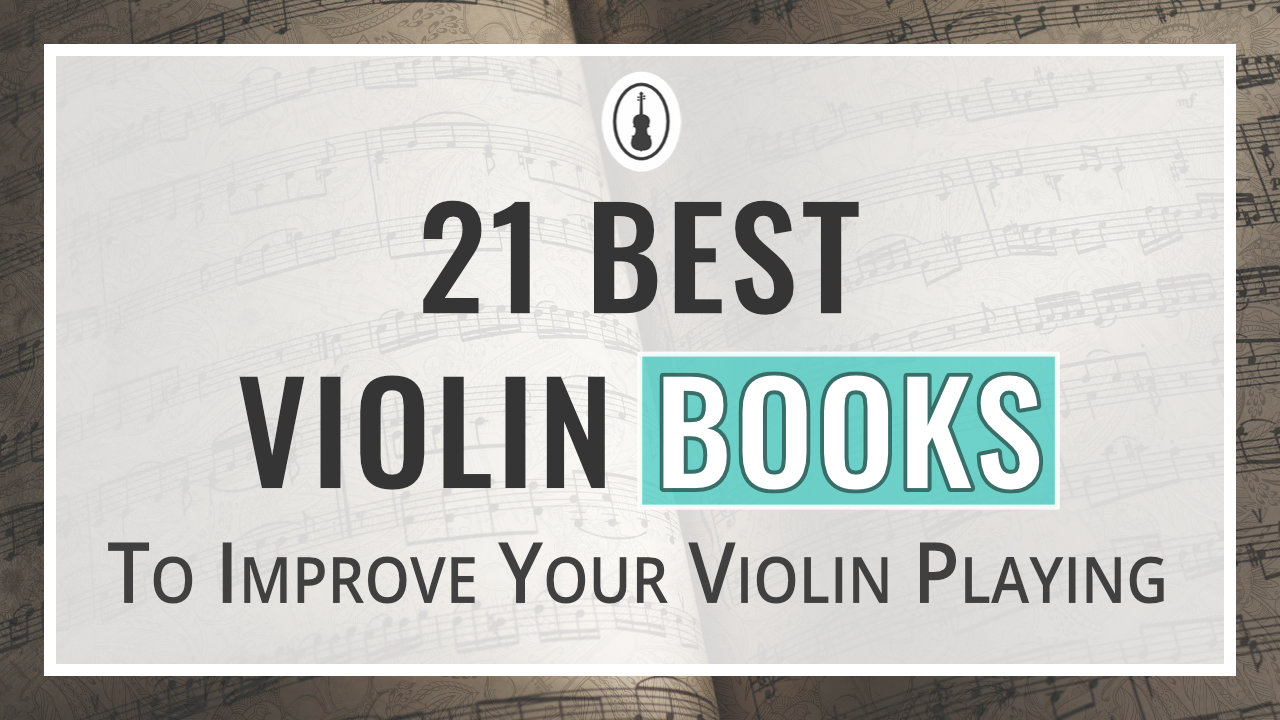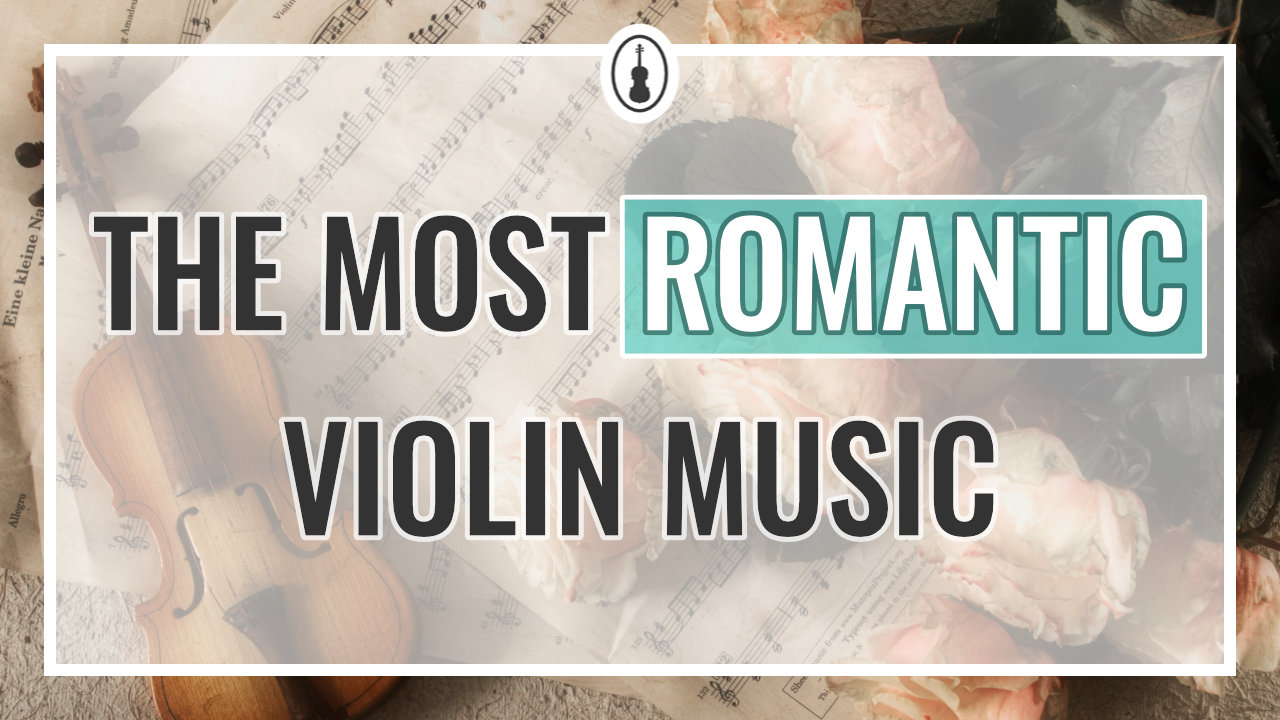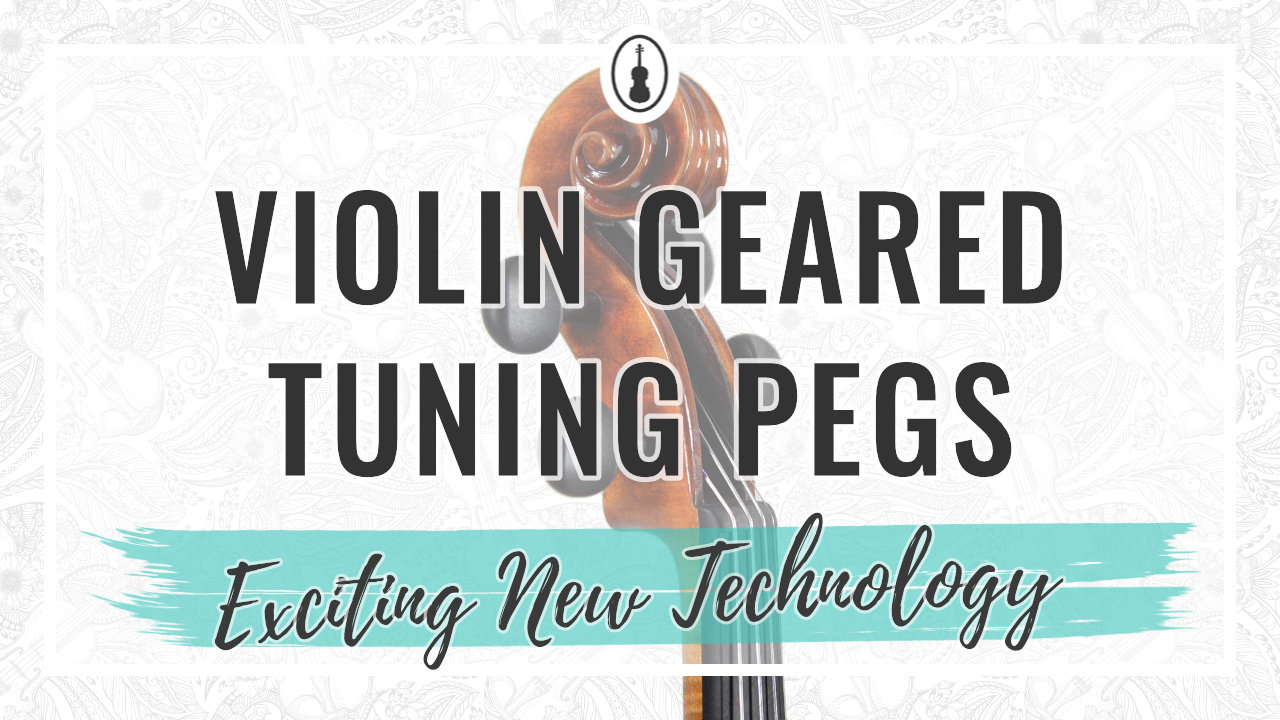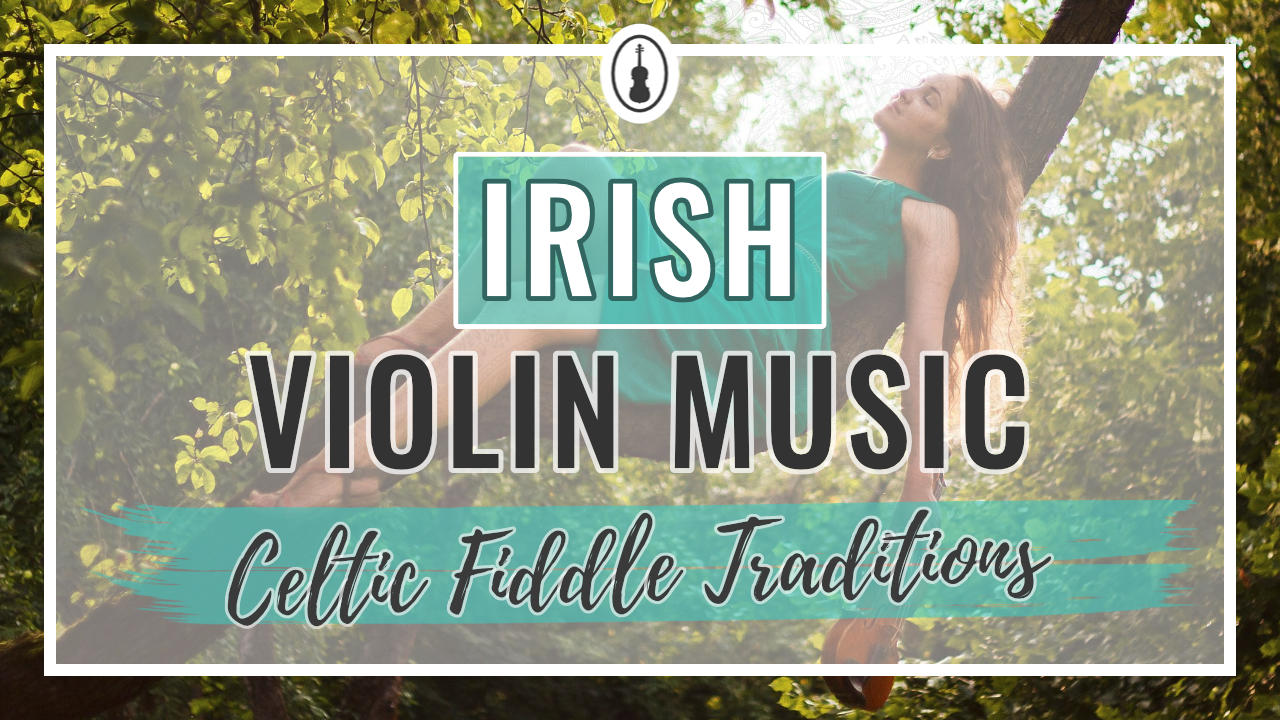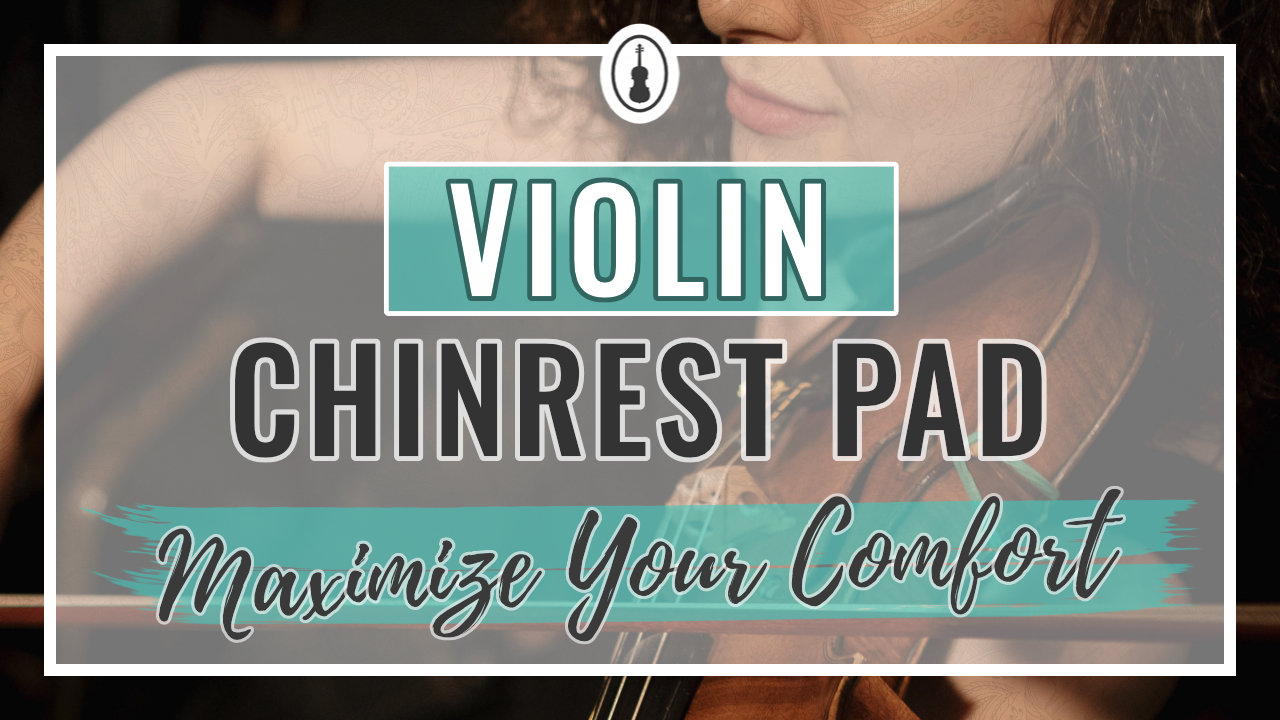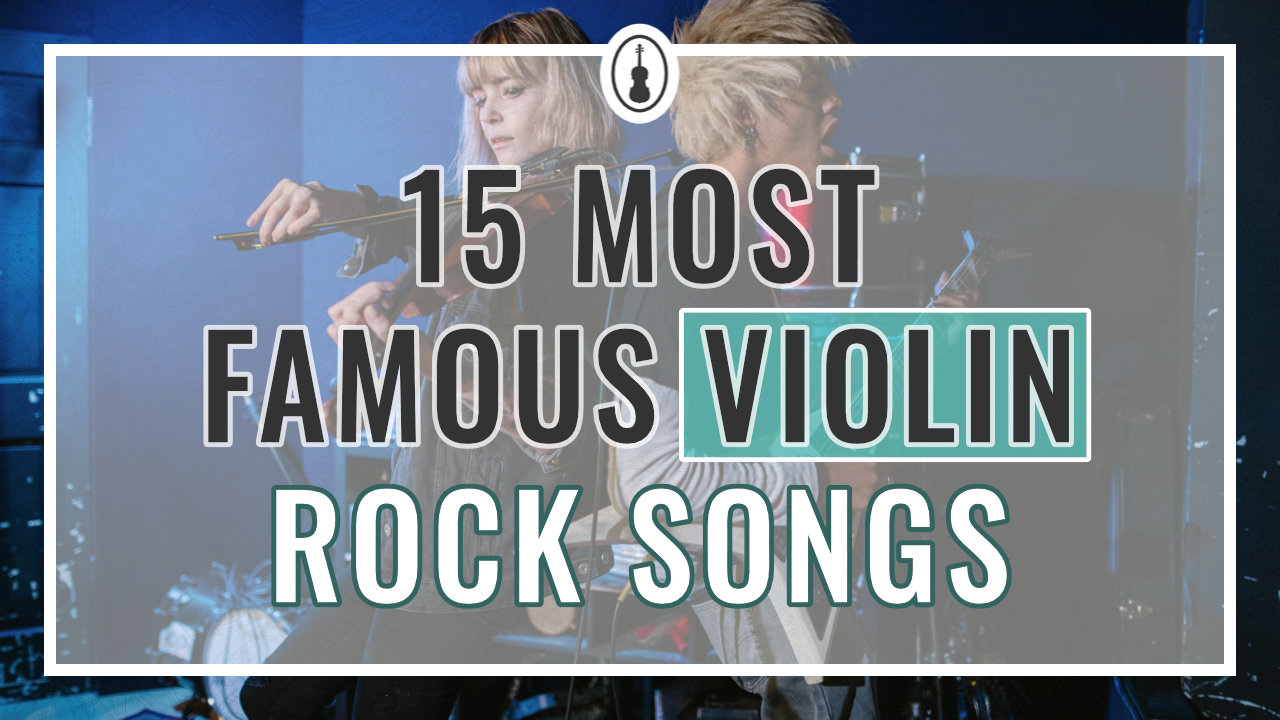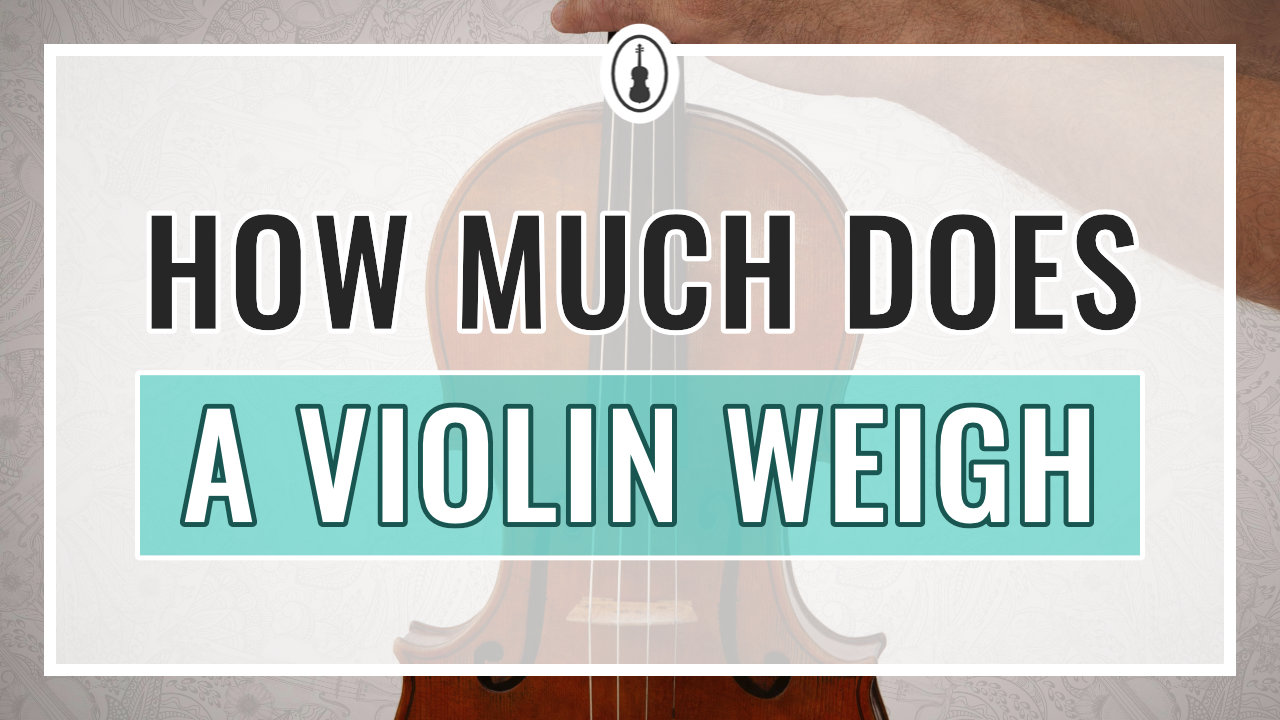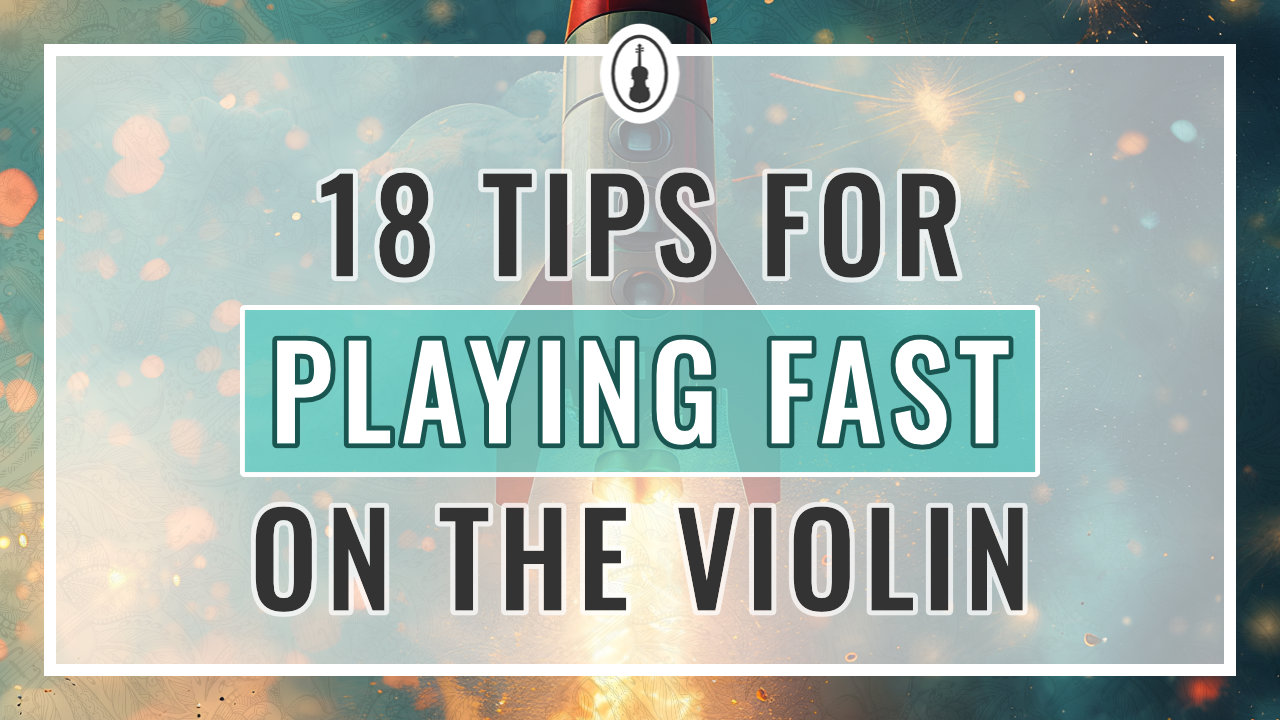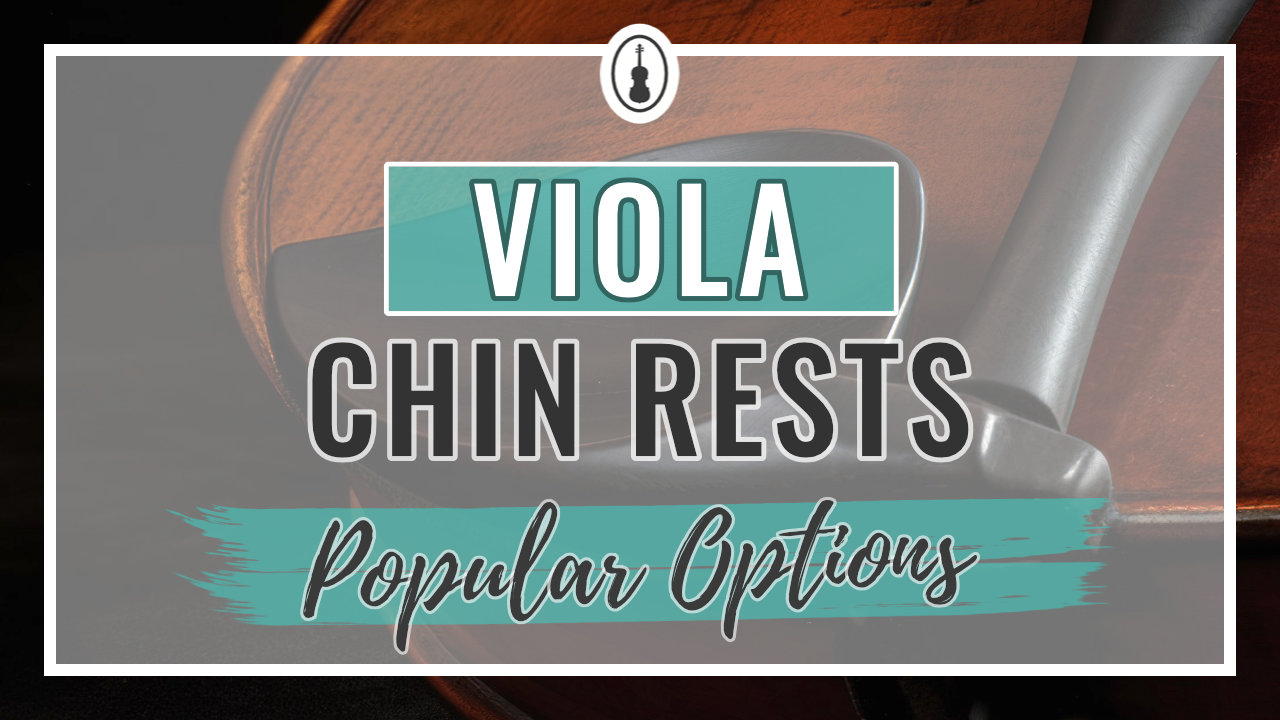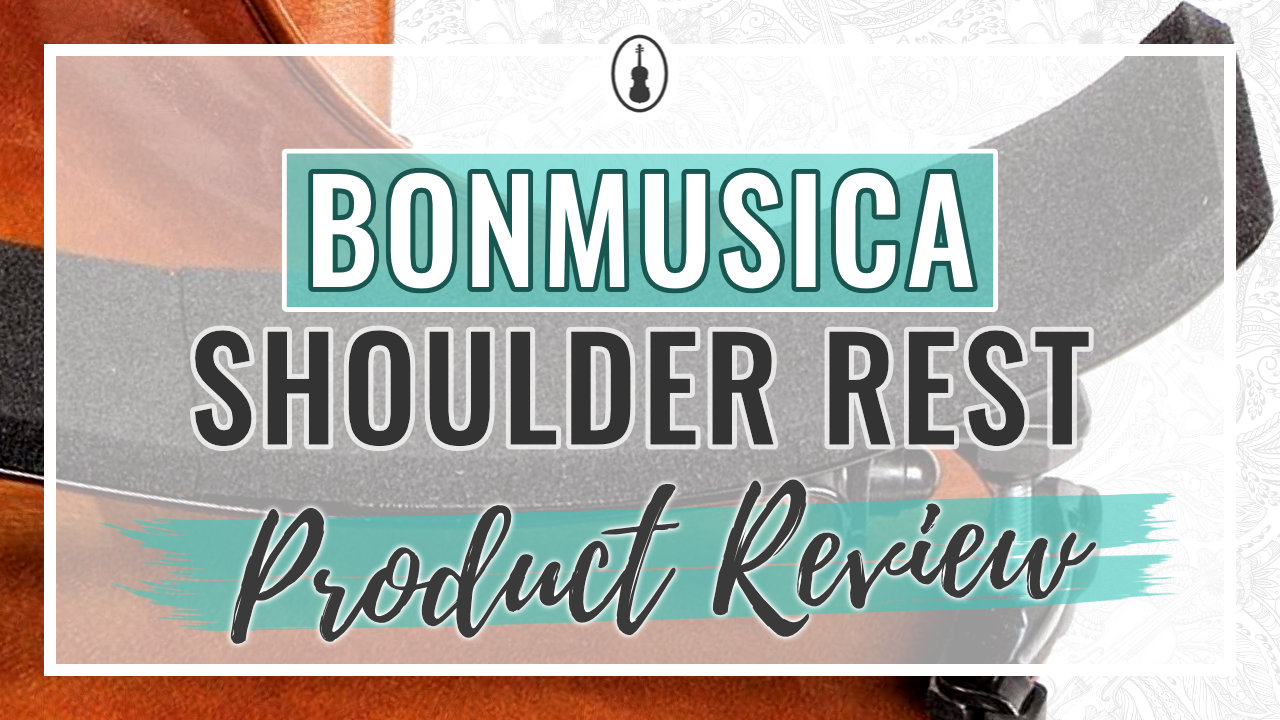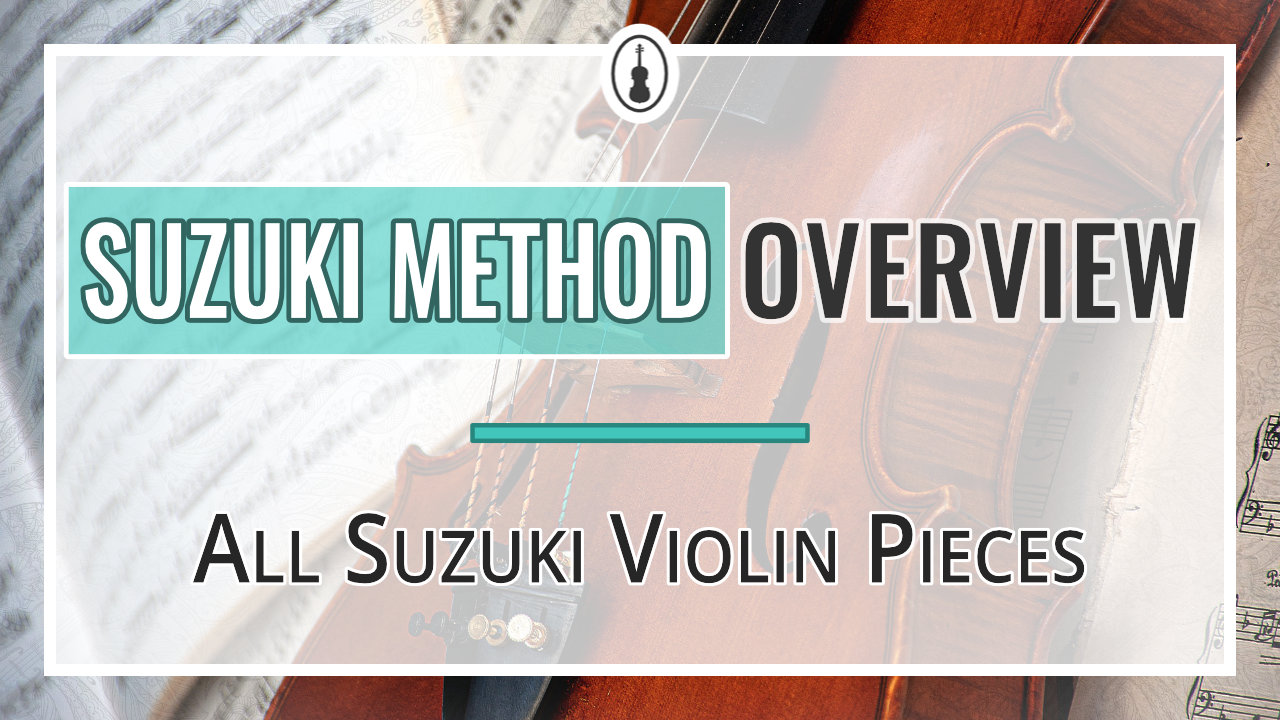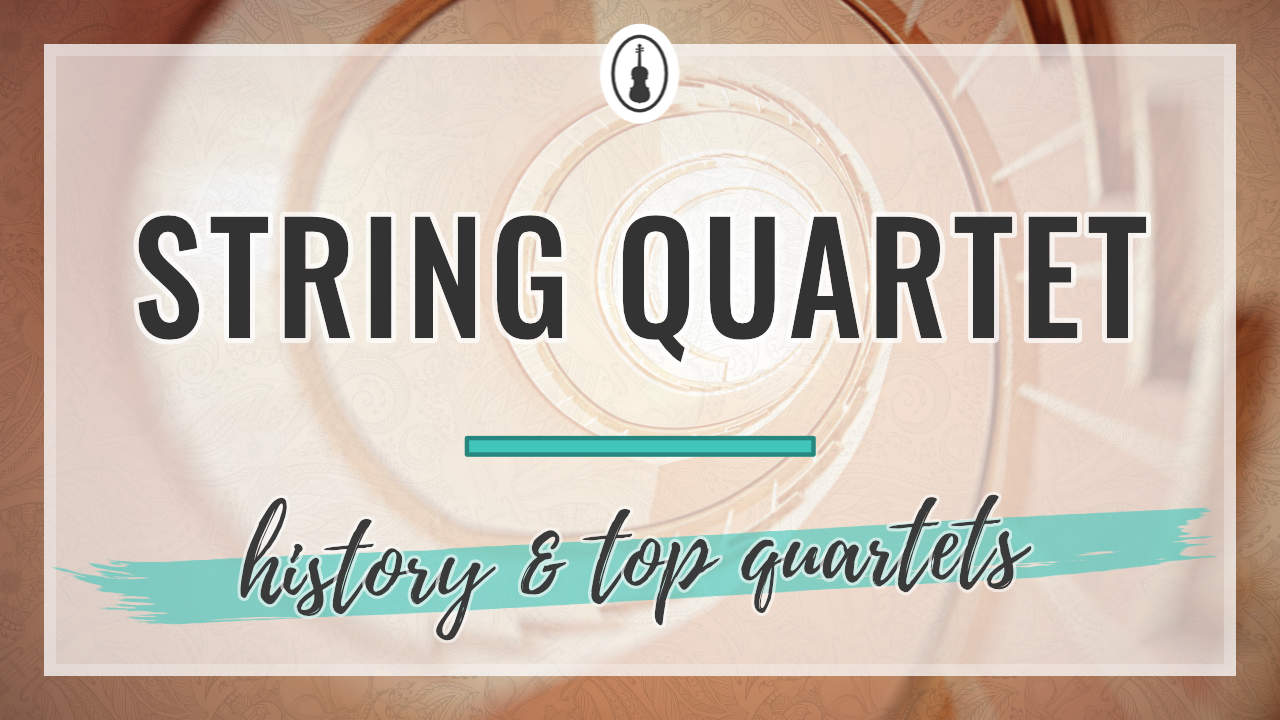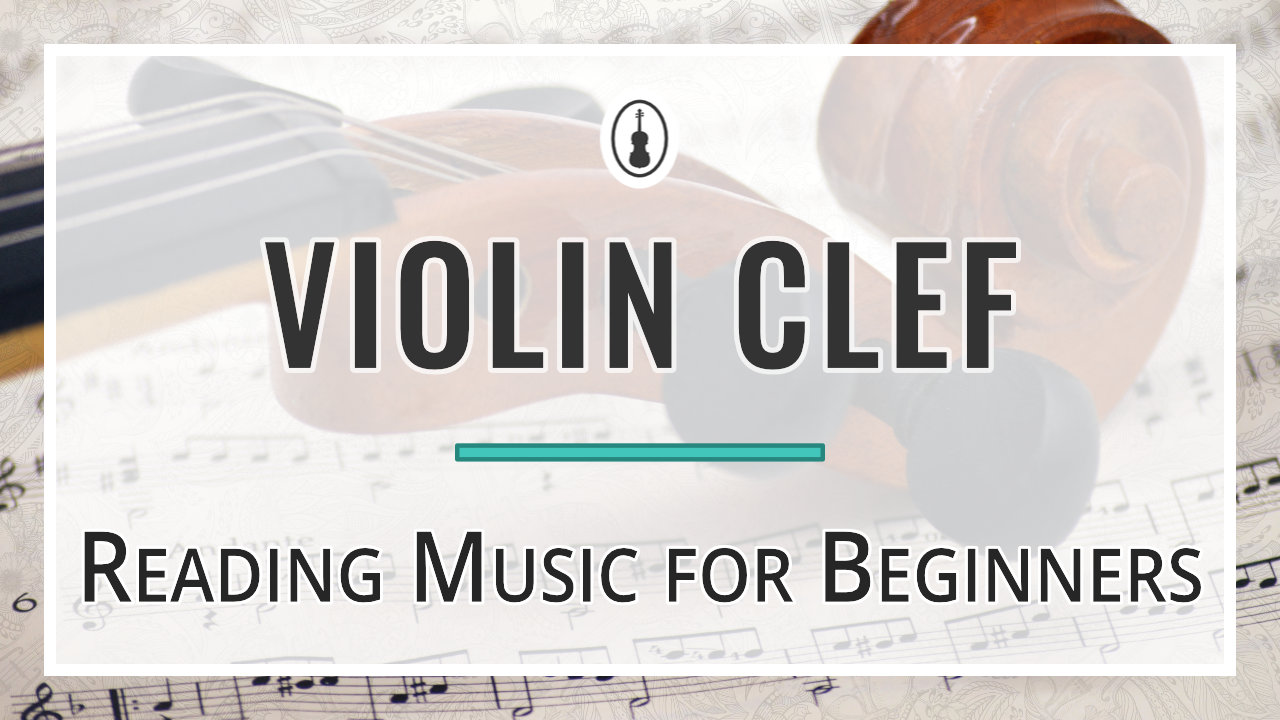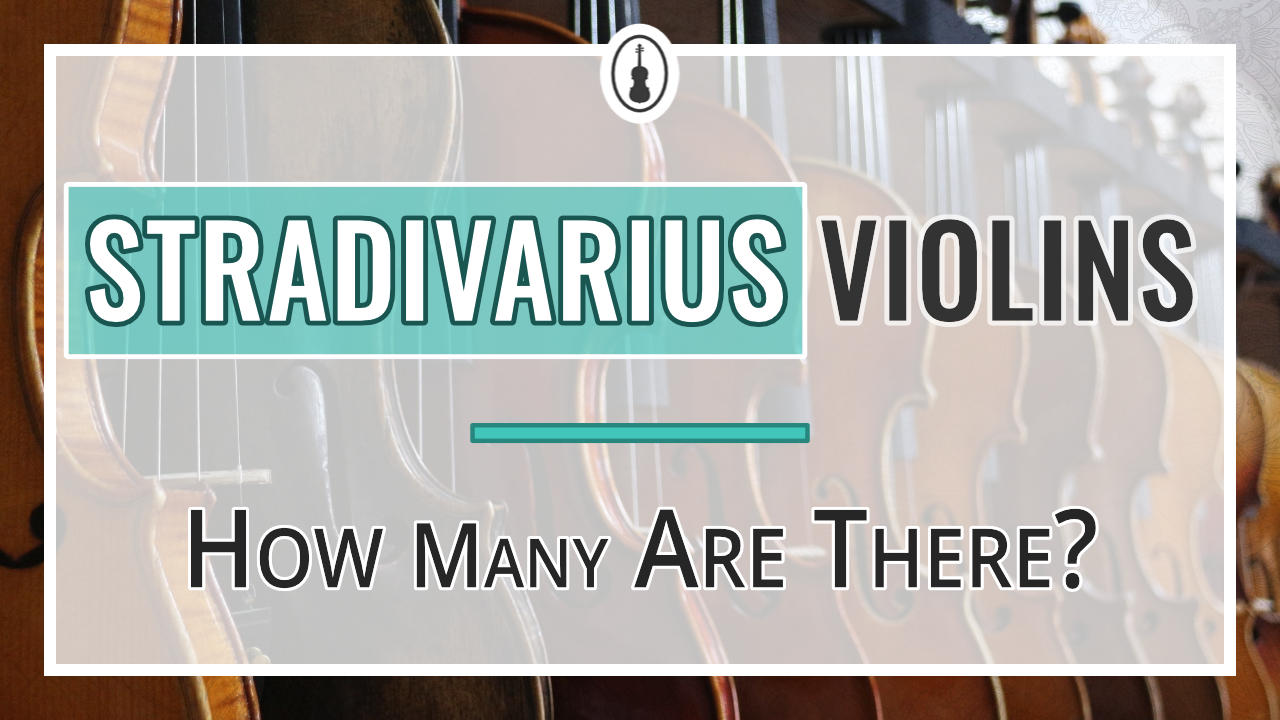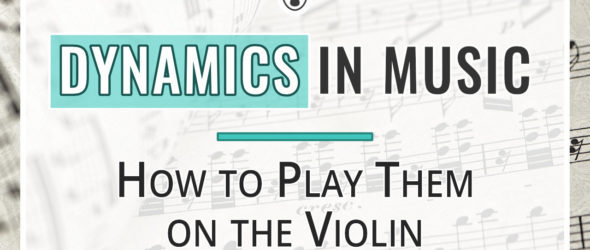
Learn all about dynamics in music, dynamic markings, and Italian terms used to name them!
My students often ask me what I myself have wondered many times, “How can I make my playing more expressive and less boring?”. One part of the answer is “dynamics”. But what do those musical terms mean and how can one add them to their violin playing? Let’s dive in!
What are the Dynamics in music?
Dynamics in music are the changes in the volume of a note or a musical phrase. Changing dynamics throughout a musical piece is important to add interest and character to a musical performance and bring out emotions. To describe music dynamics, we use Italian words.
Although composers write dynamic markings in sheet music, musicians always have the freedom to experiment with it at their will and you can do it too. For example, you can download my free sheet music, learn a song and then add your personal character to a piece by playing chosen parts softer or louder.
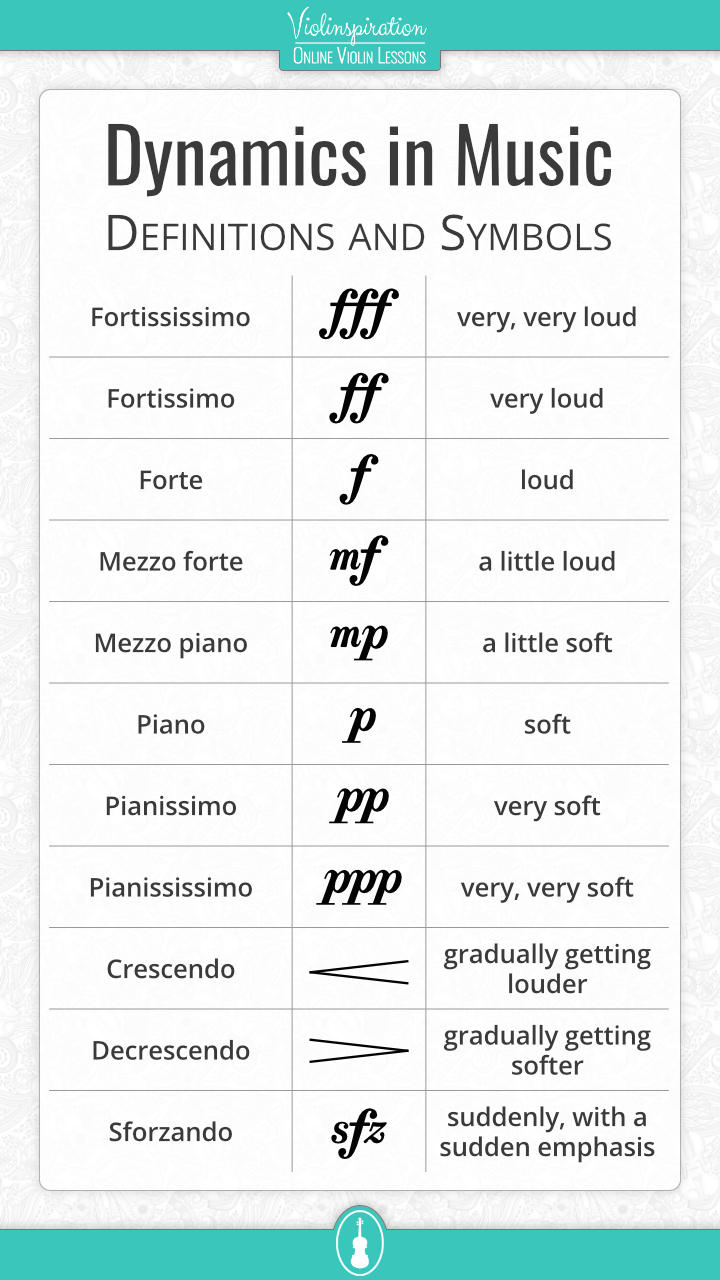
Getting Started with Dynamics in Music – Chart
The following music dynamics chart will help you identify which music dynamic terms are softer and which are louder:
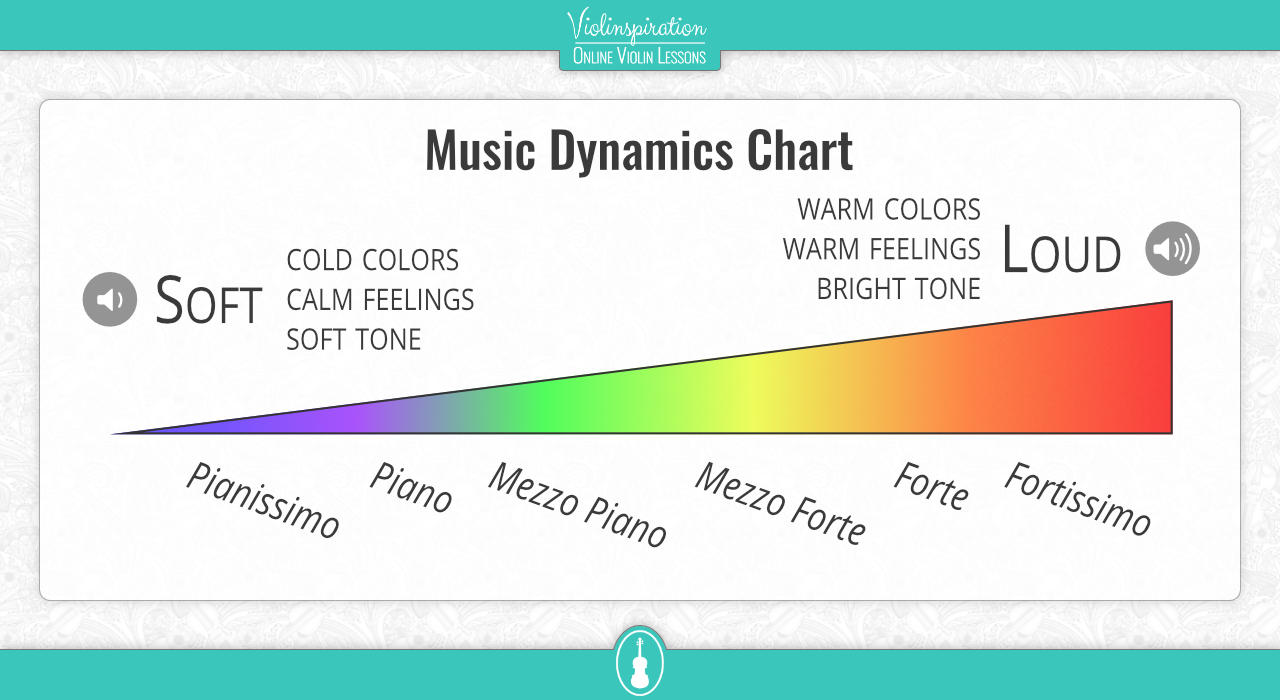
Now, let’s study all the details of dynamics in music one-by-one.
Dynamics in Music – Markings in Sheet Music and Their Meaning
Forte

Forte is notated with the letter f and it is an Italian word meaning “loud”. In music, it means to play something loud, with confidence and power. Forte can give out emotions like anger, drama, brightness, and pomp. Genres like rock and heavy metal music use a lot of forte and fortissimo to achieve a loud sound.
An example of a forte in Baroque music piece:
Fortissimo

Fortissimo is notated with the letters ff and it means to play something very loud, with more power and confidence than in forte. Fortissimo can give out emotions like anger, drama, and storm – it draws the attention of the audience.
An example of fortissimo in a contemporary piece:
Piano

Piano is marked with the letter p and it is an Italian word meaning “soft”. In music, it means to play something softly, like a lullaby. Piano can give out sweet and calming emotions, as well as bring out a melancholic mood. A great example of soft dynamics used in movie soundtracks is dramatic scenes that need to convey tense emotional content.
An example of a piano dynamic marking in a Classical piece:
Pianissimo

Pianissimo is marked with the letters pp and it means to play something even softer than piano. Pianissimo usually has a soothing and relaxing effect but it can also sound mysterious and secretive, like someone whispering a secret melody instead of singing it loudly.
Mezzo Forte

Mezzo forte is marked with the letters mf. Mezzo is an Italian word that means moderate, so mezzo forte means moderately loud or medium loud. It is quite neutral and it can bring out mild and tranquil feelings. Popular music doesn’t have a lot of dynamic changes, most of it is in mezzo-forte without intense dynamic contrast.
Mezzo Piano
Mezzo piano is marked with the letters mp and it means louder than piano but softer than forte. We could say that it means to play something in a medium soft way. Mezzo piano is usually used to express a clearer and more confident piano, but without reaching the mf.
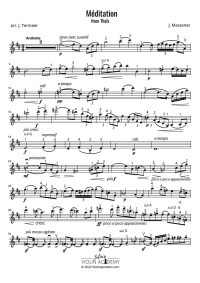
Meditation from Thaïs by J. Massenet
Free Violin Sheet Music
Crescendo

Crescendo can be marked either with the abbreviation cresc. or with a hairpin symbol that starts narrow and gets wider. It is a gradual increase in loudness. Crescendo starts from a soft sound, such as pianissimo, and gradually builds up to e.g. forte. Crescendo is used to build up intensity in music and it usually adds a dramatic effect as a musical phrase gets gradually louder.
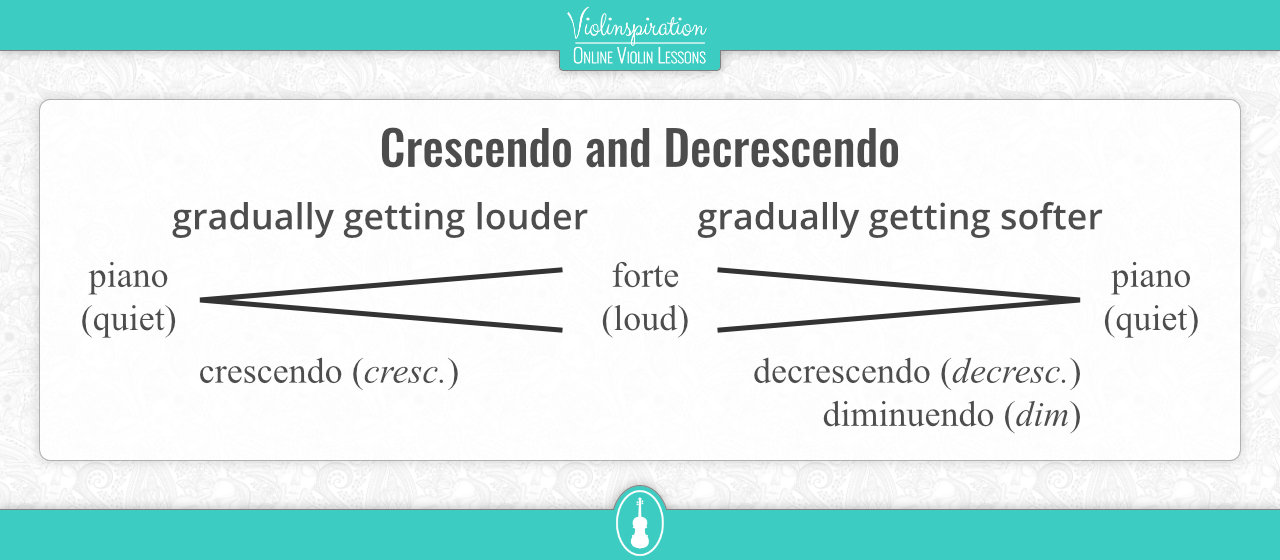
Decrescendo
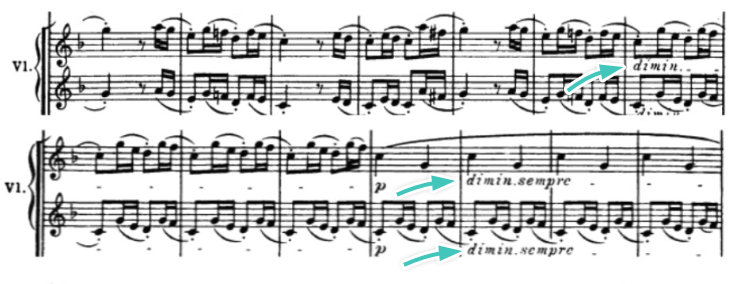
Decrescendo (or diminuendo) is the opposite of crescendo. It can be marked either with the abbreviation decresc., dim. or with a hairpin symbol that starts wide and gets narrower. It is a gradual decrease in loudness. The decrescendo starts from a loud dynamic such as fortissimo, and gradually decreases to a softer one, such as piano. Decrescendo is used to make a musical phrase gradually quieter and calmer and possibly make the sound disappear completely, adding a dramatic, ominous effect.
Accent
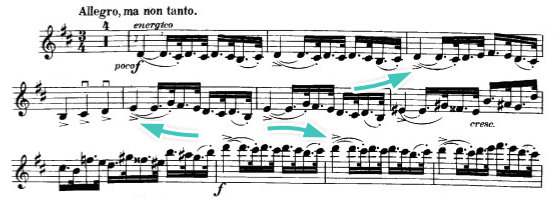
Accents are marked with a short hairpin above or below the note that is to be accented. It means to put emphasis on a single note, to stress it vividly and with power, like an instantaneous forte. It gives out emotions like nervousness, strictness, power, and surprise.
Sforzando
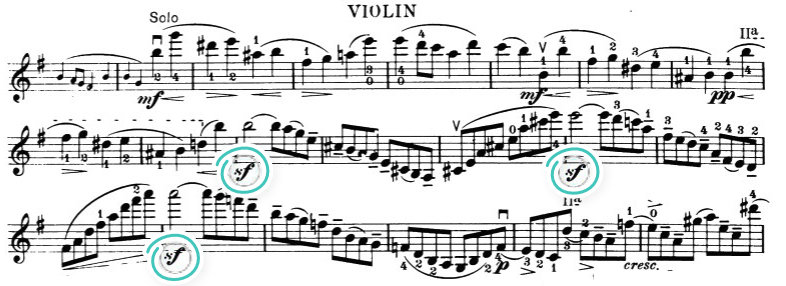
Sforzando is notated in sheet music with the letters sfz and it means to play something with abrupt power. It means to accent a note or give a strong and sudden emphasis to a note or musical phrase to color it with emotions like frustration, surprise, and draw the listeners’ attention.
Extreme Dynamics in Music
Now that we’ve covered the basic dynamics, it’s time to mention sudden changes in music, often requiring more than two dynamics. The most common ones are triple piano – ppp for pianissisimo, which is extremely quiet, and triple forte – fff for fortissisimo, which is even louder than fortissimo.
The dynamic level of extreme dynamics refrains from the typical range of dynamics. There are pieces with extreme range and extreme crescendo and decrescendo symbols.
How to Play with Different Dynamics on the Violin
In order to fully understand how to do different dynamics on the violin, let’s take a look at some basic concepts. The main way to control dynamics on the violin is the bow. Music dynamics are achieved by controlling various aspects like bow part, bow length, bow speed, bow pressure, and the contact point.
Whenever you want to do a specific dynamic or a combination of dynamics, you need to decide:
- Which part of the bow to use
- How much bow length to use
- How fast to move the bow on the string
- How much pressure to apply on the string
- The contact point of the bow to the string
Let’s look at each concept separately.
1) Bow Part
Each part of the bow has a different sound result.
- For loud dynamics like forte and fortissimo, play at the frog or at the lower third of the bow.
- For medium dynamics like mezzo forte and mezzo piano, use the middle of the bow
- For soft dynamics like piano and pianissimo, use the tip and the upper third of the bow.
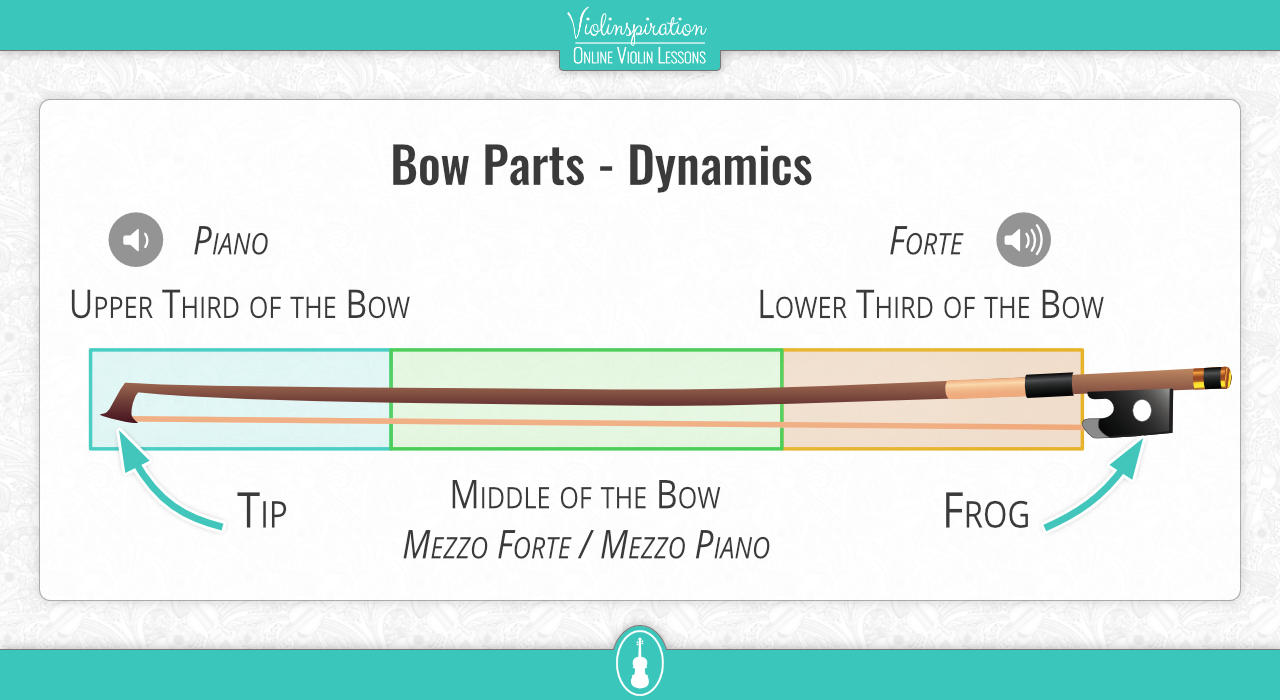
2) Bow Length
The bow length has to do with how much bow you use to play a note.
- For louder dynamics use a medium to long bow strokes or even the full length of the bow starting at the frog or at the middle.
- For medium dynamics use a medium to short bow strokes
- For soft dynamics use short bow strokes.
3) Bow Speed
Bow speed is all about how fast you move the bow on the string for one note.
- For loud dynamics, draw the bow at a medium to fast speed.
- For medium dynamics, use a medium to slow speed.
- For soft dynamics, I advise you to use a slow bow speed.
4) Bow Pressure
Bow pressure has to do with how much pressure you put on the string with the bow. You apply pressure by pressing your index finger on the stick and “leaning” your hand and fingers more on the bow. You can remove pressure by pretending to lift the bow off of the string.
- For loud dynamics, apply a lot of pressure
- For medium dynamics, use medium pressure like when playing normally
- For soft dynamics, remove pressure and move the bow lightly on the string
Thick strings (like the G string), the bridge, and the bow at the frog, can take a lot of bow pressure. Strings of medium thickness (like D and A strings), the middle contact point, and the middle of the bow, can take medium bow pressure. Thin strings (E string), the fingerboard, and the tip of the bow cannot take much bow pressure.
If the sound is too squeaky, try playing with less pressure or with a faster bow speed.
5) Contact Point
Learn all about the contact points from my free guide:
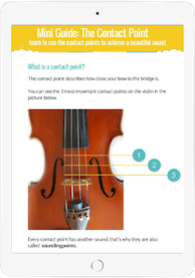
FREE Contact Point Guide
Improve Your Contact Points Technique
Optimal Combinations for Expressive Dynamics
As a rule of thumb, the more you do something, the louder the result will be. The less you do something, the softer the result is. The key to clear and expressive dynamics is the right combination of the five factors mentioned above.
- To achieve forte, play anywhere between the frog and the middle with a medium bow length, medium to fast bow speed, and a lot of pressure near the bridge. To pull off a fortissimo, apply more speed or more pressure.
- For mezzo forte, use the middle third of the bow with medium bow length, medium bow speed, and medium pressure between the bridge and the fingerboard.
- For an emotional piano, play at the tip of the bow with a short stroke, slow bow speed, and a little pressure toward the fingerboard. To achieve pianissimo, remove pressure or do a slower speed.
- For the crescendo, gradually increase bow length, bow speed, and bow pressure and gradually move closer to the bridge while playing.
- For decrescendo, gradually decrease bow length, bow speed, and bow pressure and gradually move closer to the fingerboard while playing.
- For accents and sforzando, put pressure on the bow with your index finger, draw a fast bow and then release the index finger to its natural pressure while playing. Aim for an accented and sudden beginning of the note. It should feel like the bow “bites” the string.
Extra Tips for Expressive Dynamics
The key to vivid dynamics in music is contrast.
To achieve contrast and make the audience get goosebumps, you need to exaggerate everything you do. Think of dynamics as an actor’s gestures and facial expressions. They need to make every movement energetically and in an exaggerated manner so everyone in the audience can see it and convey emotions.
If you need to play forte, think fortissimo and the audience will perceive it as forte. When you play piano, the listeners’ ears perceive it as pianissimo. You need to be really precise and emphasize the dynamics you do.
A few words about style
Dynamic contrast highly depends on the overall musical context and the style of the piece. Each style has quite different objective loudness based on the capabilities of the musical instruments at that time. Forte in Baroque music is not the same as the forte of the Romantic period or in contemporary music. Listen to the examples in each section to get a better idea. Sudden dynamic changes are most common in pieces of the Romantic period and later, when composers’ aim was to use more than one volume for the entire piece.
Dynamics in Music – FAQ
How do you identify dynamics in music?
In order to identify dynamics in music, learn the dynamic markings – their symbols and names. Also, listen to pieces from different styles and music eras and compare them to each other to train your ears to identify each dynamic. If you can read sheet music, read the score while listening to a recording of the piece, and pay attention to how each dynamic sounds.
How do you practice dynamics in music?
Practice dynamics in music by experimenting with it on open strings and scales. Then, take a simple musical phrase from a song you like and try the same piece with different dynamics. First, play it softly and then fortissimo. Experiment with the contrast while focusing on the sound result.
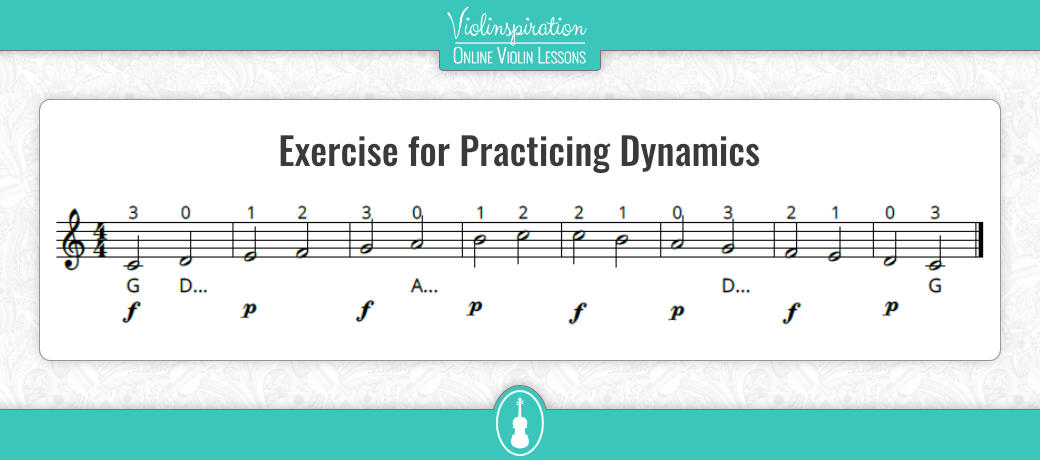
If you have never worked on playing with dynamics, check out my C Major scale booklet with an exercise for practicing dynamics:
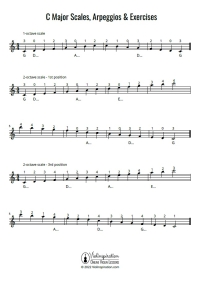
C Major Scales, Arpeggios
and a Bonus Exercise
Another thing you can do is take a music piece and find the written dynamic marking. Try the opposite of the one written, and see what it sounds like!
In any case, you need to “search for the sound” that you like, and that requires experimentation.
Which is louder, mezzo forte or forte?
Mezzo forte is softer than forte. The word mezzo means medium or moderate in Italian, so mezzo forte means medium loud, while forte is loud.
